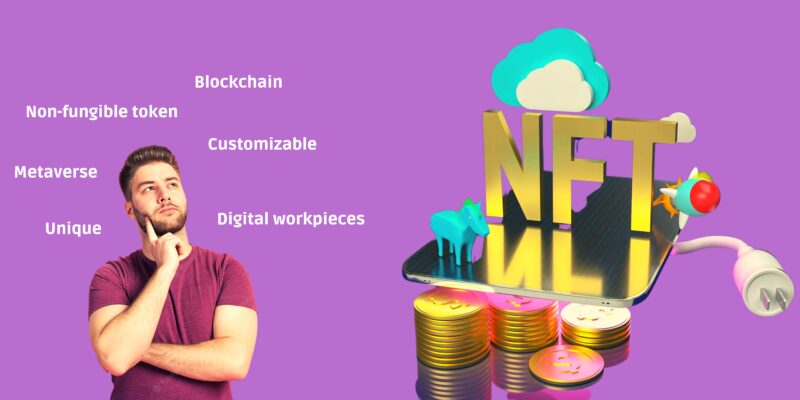
Metaverse, blockchain, bitcoins, cryptocurrencies… Do these terms ring a bell? In recent years, numerous words – each more obscure than the other to neophytes – have been introduced in our vocabulary. Among these terms, one concept – easy to explain, yet complex to understand – often comes up: NFTs.
Today, we will try to explain what NFTs refer to and why many brands and celebrities are getting involved with them.
First, let’s look at the formal definition: an NFT – short for “non-fungible token” – is a unique digital asset that belongs solely to the owner who purchased it and cannot be replaced or exchanged for something of equal value. NFTs include artwork, music, tweets, videos, and even books. They can fetch a high price due to scarcity and speculation. Basically, NFTs turn these digital “objects” into unique and verifiable assets that are easy to trade on the blockchain (a huge, secure database that contains the history of all exchanges between users, without any central supervisory body). NFTs obviously create a scarcity of digital workpieces, which enables artists to conveniently authenticate their digital work, set a price for their art, thus controlling the market.
If you buy an NFT from the person who created it, a record of your purchase will be kept on the blockchain, and once a transaction is recorded on the blockchain, it will stay there forever. It means that you can prove that this NFT belongs to you, and that you are its sole owner.
Why are brands interested in NFTs?
The versatility of NFTs allows brands to use various types of innovative content, such as virtual clothing, virtual real estate, or virtual art. Companies are then able to tell their brand story in a more creative way and activate new means of interaction with their consumers. For example, the luxury brand Gucci has broken new ground Many businesses are starting to think outside the box and have come to the conclusion that NFTs can help create digital communities.
Furthermore, by opening the door to user-generated content, allowing their community to suggest what kind of NFT they would like to possess, or even offering them as prizes during contests, brands can create a buzz. Some companies even use the revenue generated by NFTs to support charities or showcase young talents through collaborations.
Yet, NFTs should not be created for anything and everything! As any element of a communication strategy, they must be used wisely, keeping in mind that authenticity is the best approach. A good project requires time and investment. For the numerous brands that would like to enter this field, it makes sense to surround oneself with experts in order to make sure that NFTs fit in with the brand’s DNA and the business long-term strategy, while taking into account the end customers: they are the ones who will be the ambassadors of this new project.
Lastly, a question remains: what is the environmental impact of NFTs? According to the New York Times, the production of a single NFT emits more than 200 kilos of carbon dioxide, the equivalent of an 800 kilometer-journey in a classic petrol-powered car. In the era of Green IT and digital sobriety, it might be a good idea to think twice before investing in these virtual workpieces.
Bonus: for those who still do not clearly understand what an NFT is, would a little tune make it clearer?
Alix Payelleville



